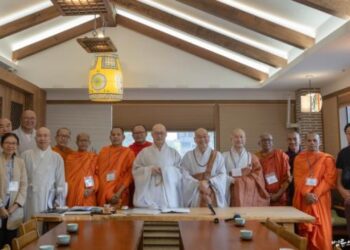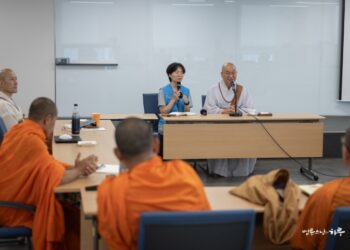Nov 29, 2024 – First Day of INEB International Conference
Today, Sunim begins attending the 3-day INEB (International Network of Engaged Buddhists) conference in Chennai, India.
Sunim departed Bangkok airport last night at 10:45 PM and arrived at Chennai airport at 12:30 AM local time.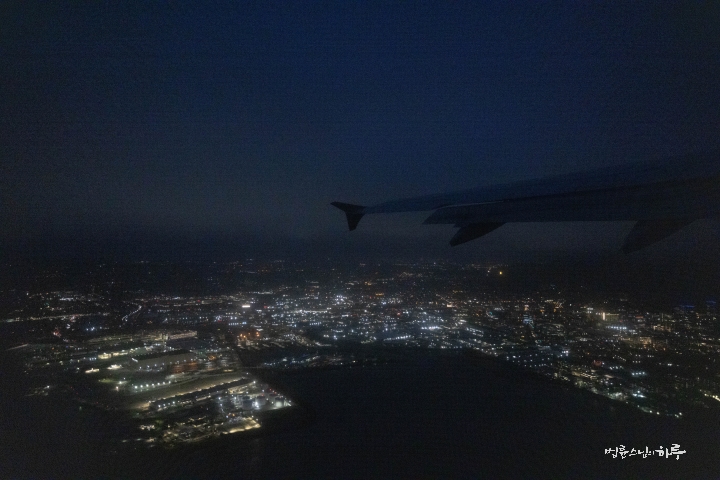
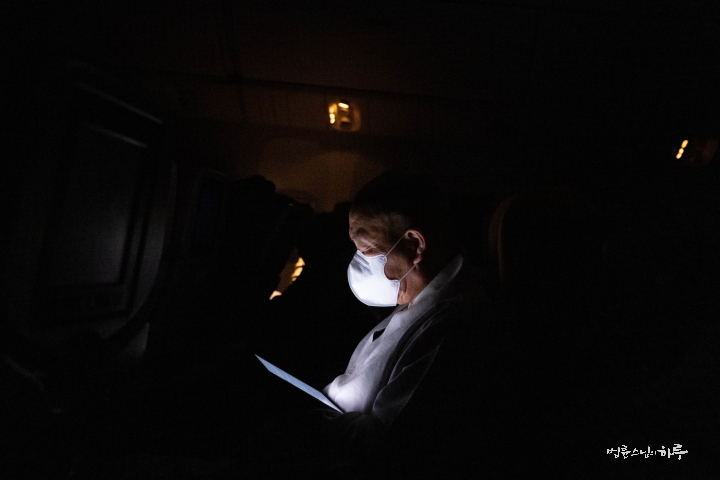
After completing immigration procedures and collecting luggage, he left the airport and headed to the accommodation. Seo San, an INEB staff member from Myanmar, came to greet and guide him. Chennai was experiencing heavy rain due to an approaching cyclone.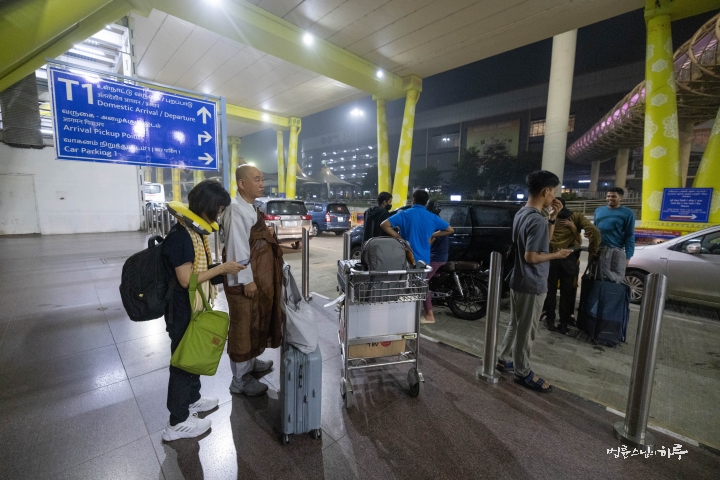
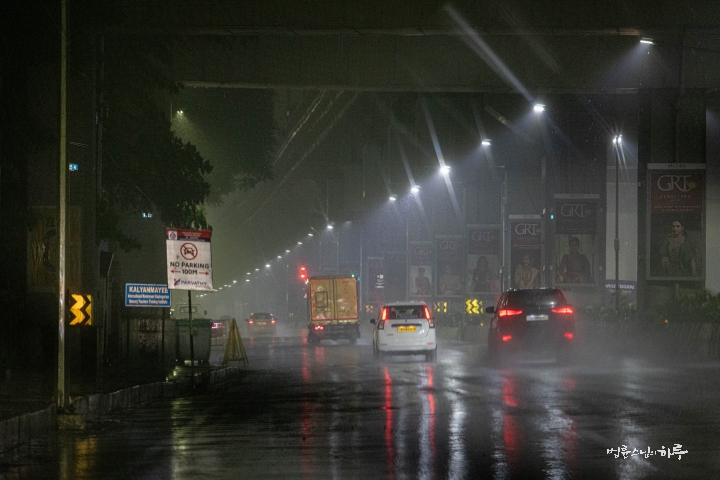
Arriving at the accommodation after 2 AM, INEB conference participants who were still awake warmly welcomed Sunim.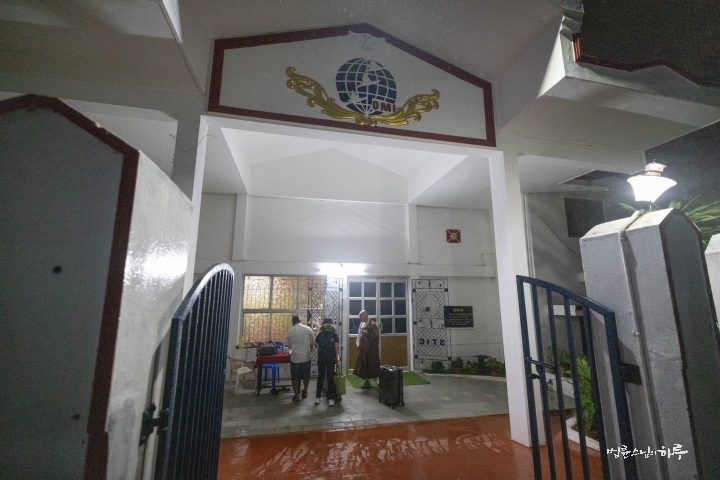
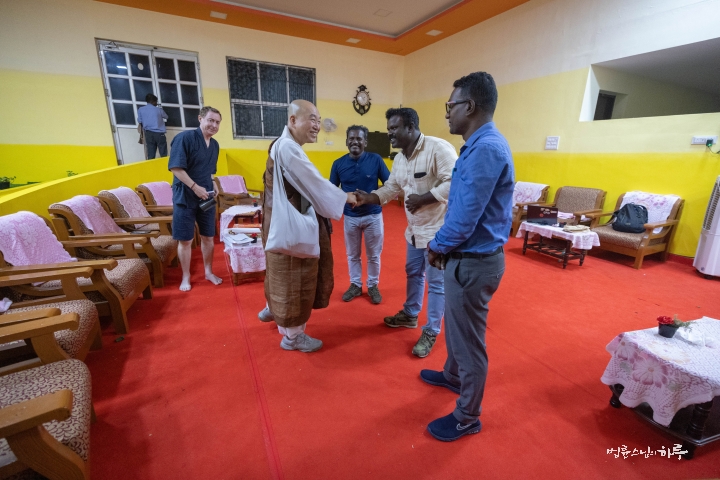
After unpacking, he went to bed at 3 AM.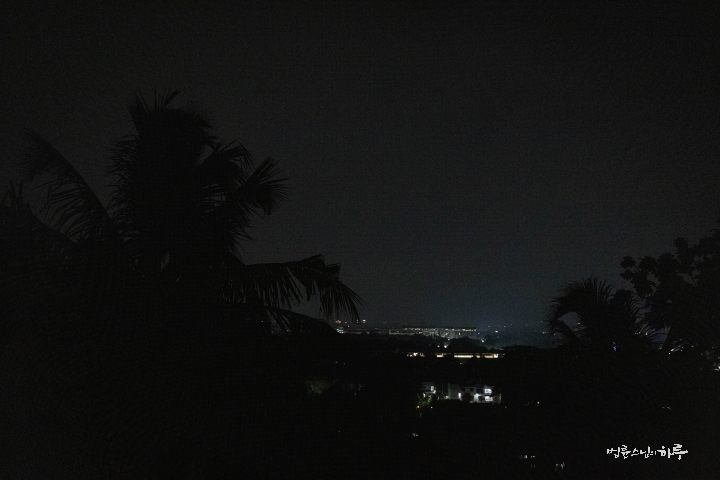
After a brief rest, morning practice, and meditation, JTS India volunteers who came to attend the INEB conference visited Sunim at 7 AM and greeted him with three bows.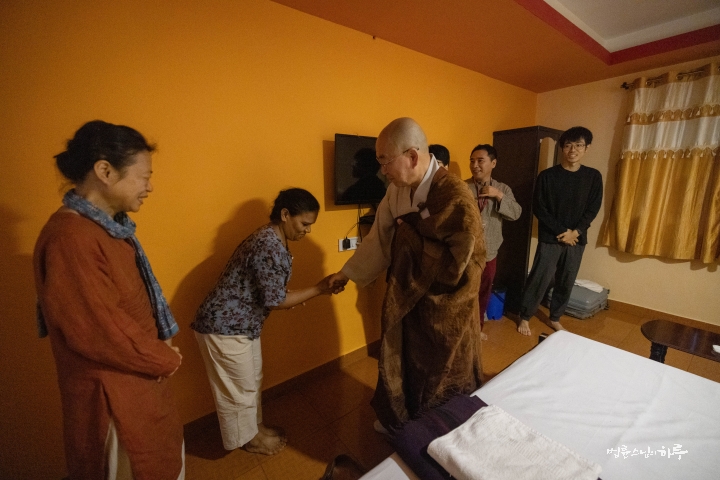
“Have you been well?”
“Yes, we have been well.”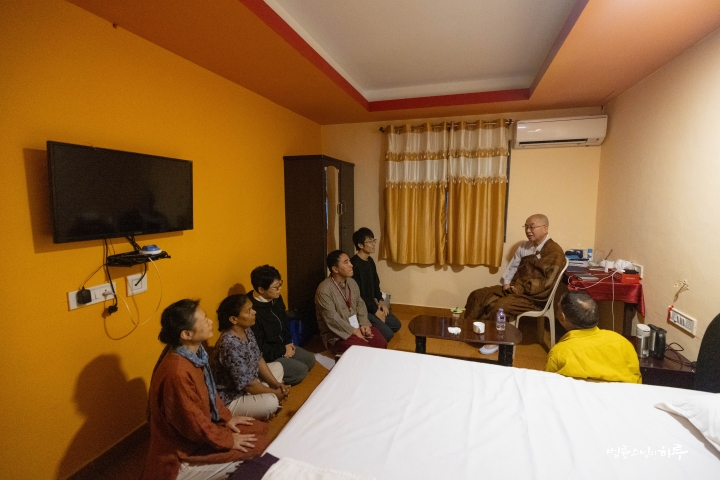
After exchanging greetings, they went down to the basement cafeteria in the venue for breakfast.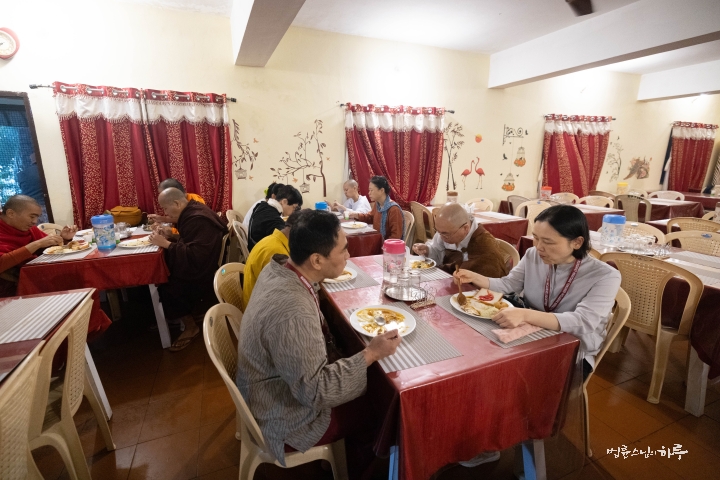
After breakfast, from 8 AM, Sunim had a meeting with Dr. Tashi Zangmo from the Bhutan Nuns Foundation (BNF).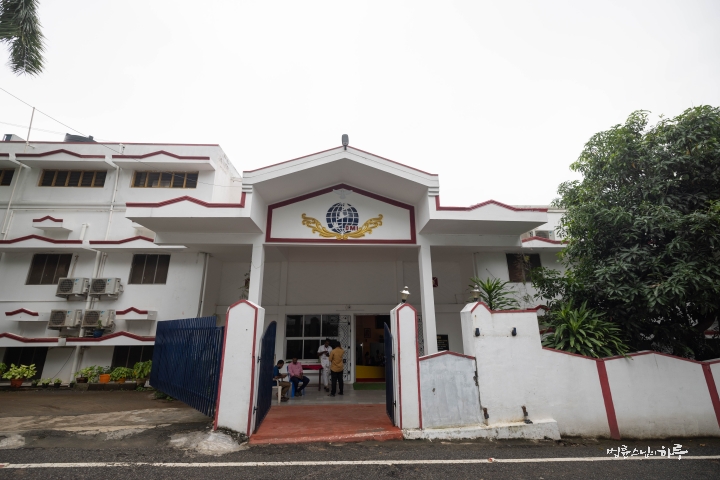
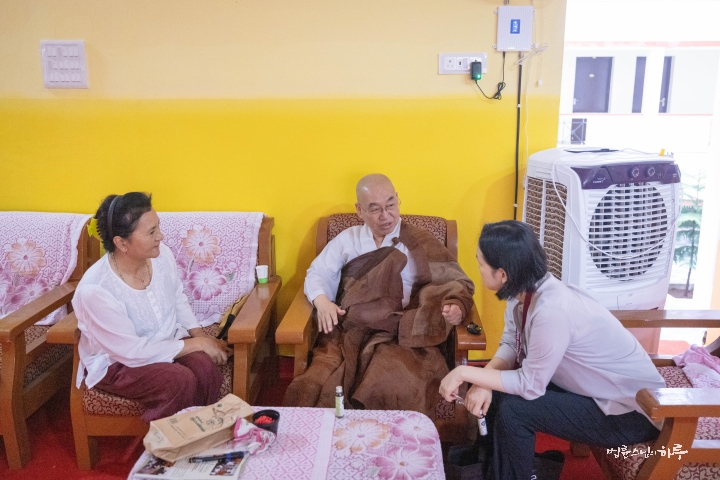
They discussed issues of conducting the Bhutanese bhikkhuni ordination, JTS supporting the Samtse region together with the Tarayana Foundation of Bhutan. Afterwards, they talked about how the staff members who recently participated in the INEB Jungto Society study tour program were doing.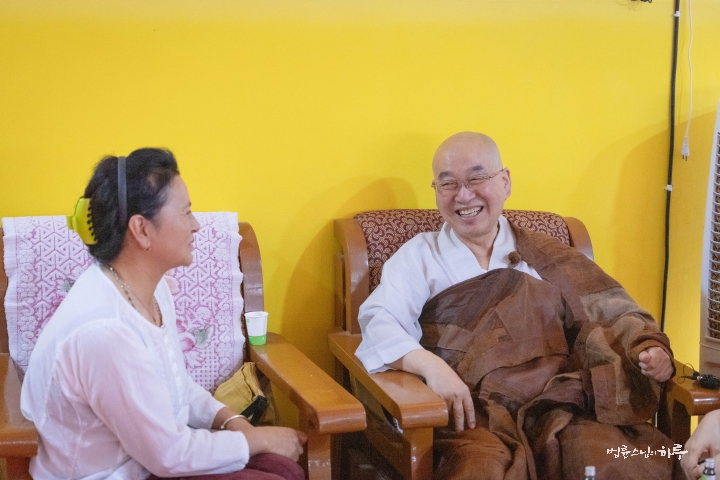
“How are the foundation staff members doing who went to study the Korean Jungto Society?”
“Both of them have improved greatly after visiting Jungto Society. After seeing how you run Jungto Society, they say they’ve gained insight into how to run the Bhutan Nuns Foundation. They’re now suggesting activities not just for nuns but for all Bhutanese citizens, and have become very proactive.”
“That’s good to hear.”
Next, JTS volunteers dispatched to Sankasia to carry out construction work visited Sunim to report on their work and seek advice.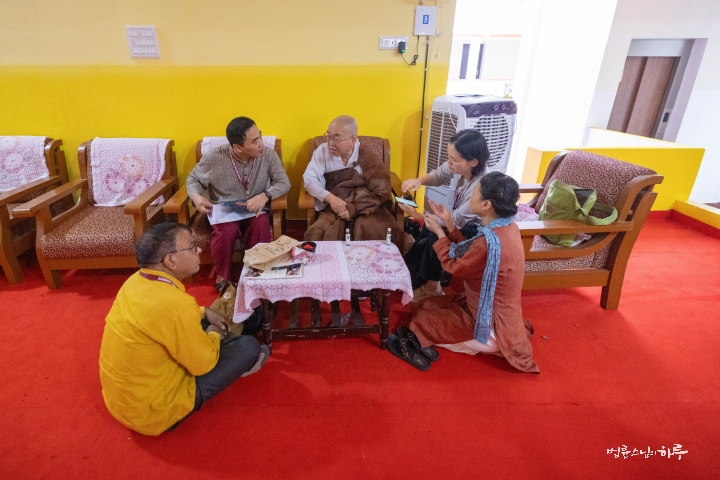
They discussed the issue of purchasing additional land for the Sankasia Dhamma Center and the design plans for the new Dhamma Center to be built.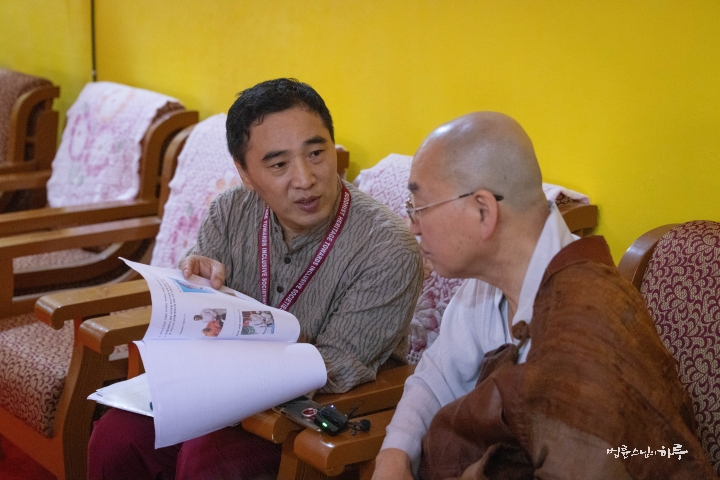
“We have prepared a comprehensive plan for the construction of the Sankasia Dhamma Center. The stupa is basically designed after the shape of the Great Stupa at Sanchi. You said that for it to be a Dhamma center, it should be able to accommodate at least 300 people, but that’s not easy, so we’re worried about that now.”
“Let’s study it.”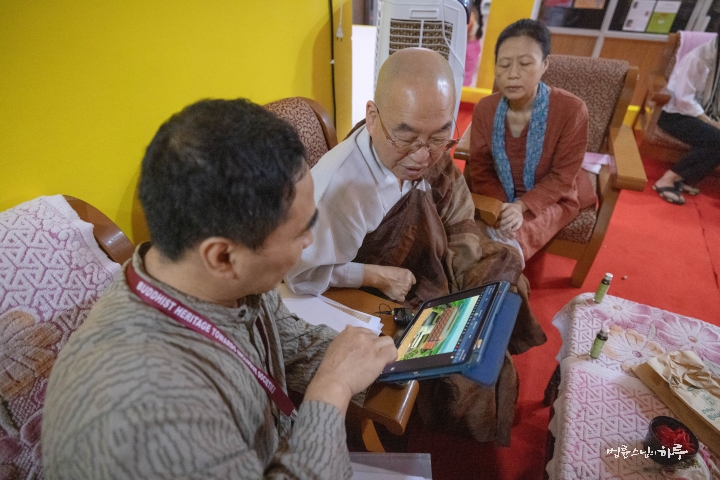
As participants kept coming to greet Sunim, it became impossible to continue the meeting. They agreed to discuss further next time, and Sunim headed to the event hall to participate in the INEB conference.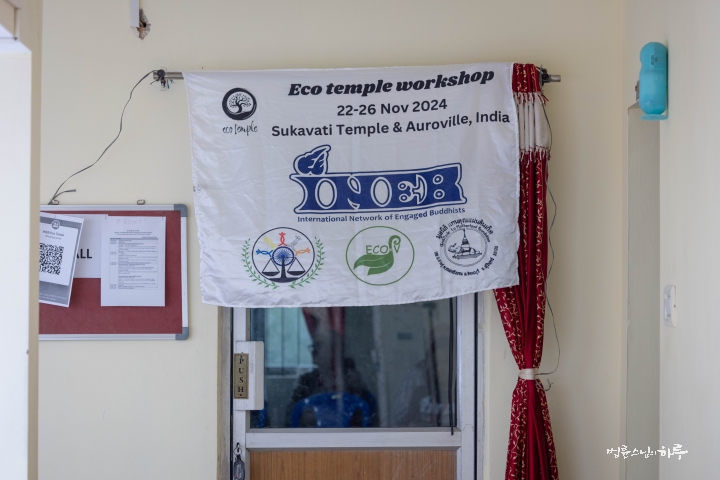
The INEB International Conference is held every two years, rotating host countries. This time it was held in Chennai, India. The theme of the conference is “Tracing the Roots of Compassion and Equity through Inclusive Social Engagement”. Participants had already been engaging in various programs at the St. Thomas International Pilgrimage Centre in Chennai from November 27th to December 1st. Sunim started attending from today’s morning session.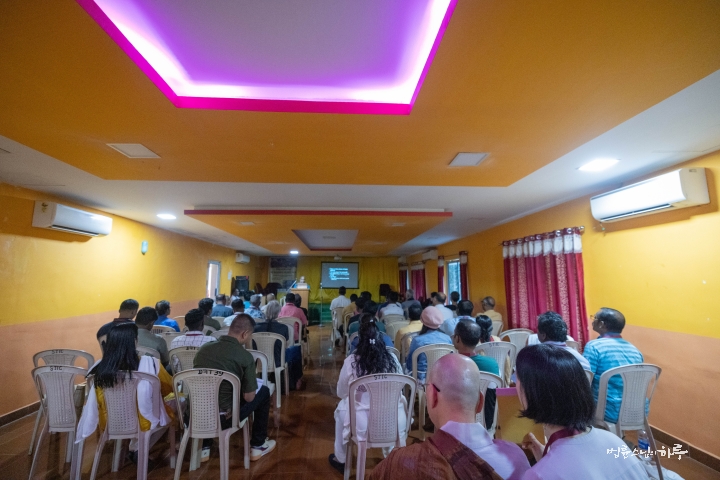
From 9 AM, all participants chose one of three topics to attend lectures and group discussions:
Topic 1. Dialogue on Building Inclusive Societies for Marginalised Communities
Topic 2. Ecological Temple Conference
Topic 3. Preserving Buddhist Heritage: Archaeological Justice and Community Participation
Sunim chose to attend the lecture on ‘Preserving Buddhist Heritage’.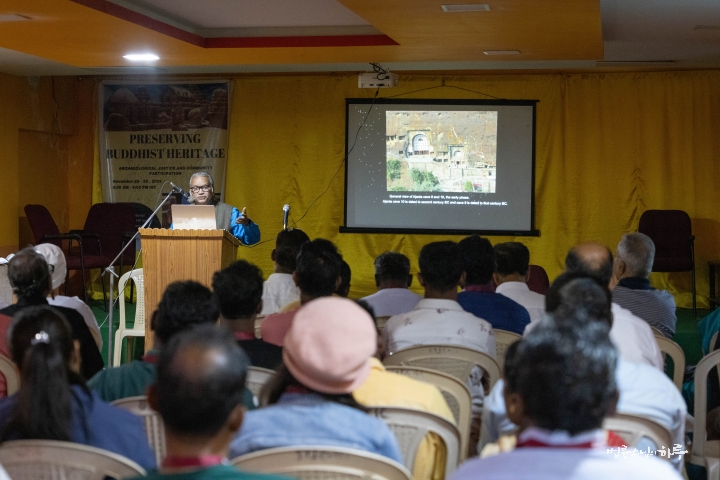
The presenter used the example of the Ajanta Caves in India to emphasize that when studying Buddhist heritage, one should look beyond surface interpretations and focus on social and political contexts, cautioning against bias or oversimplification in the research process.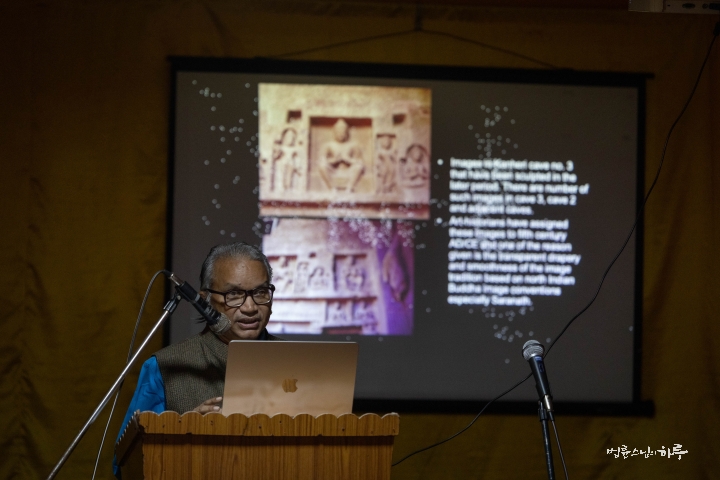
“Scholars often read cultural relics only superficially. We need to critically examine the actual historical facts and later elaborations.”
He explained that the Jataka stories depicted in the Ajanta Caves evolved from simple forms to more elaborate and detailed forms over time. For example, stories that were initially summarized in one or two lines became more expanded with added religious meanings in later periods.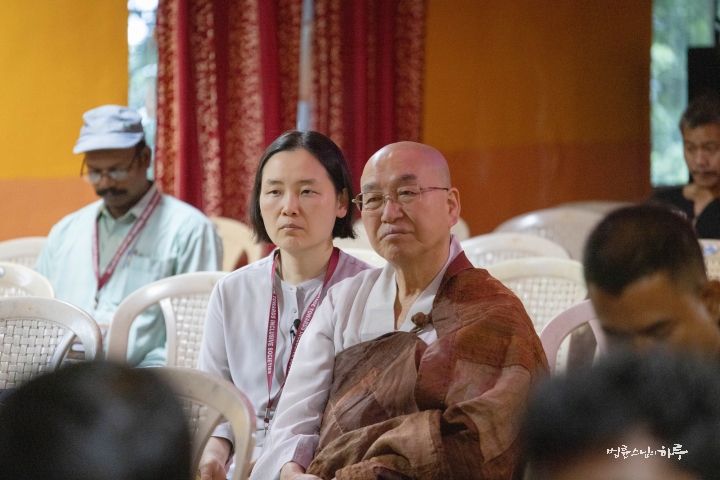
During a short break, Venerable Assaji, who runs a group for interfaith harmony and peace in Sri Lanka, came to greet Sunim. Sunim invited the Sri Lankan interfaith group to the International Reconciliation Symposium to be held in Korea next July.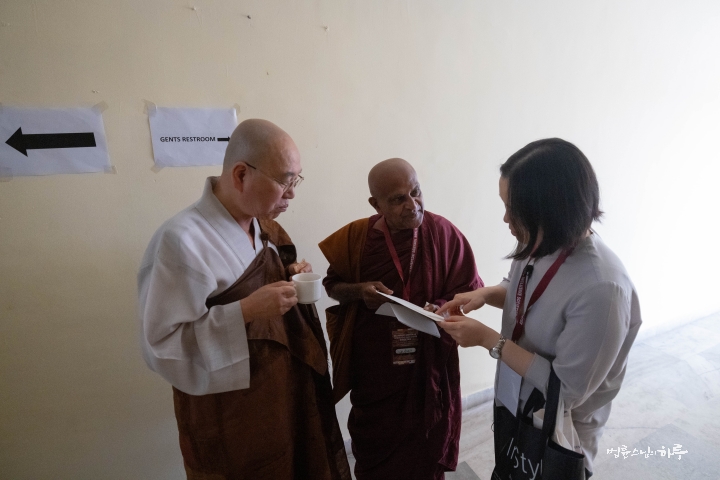
“You’re running a group in Sri Lanka where leaders of Buddhism, Islam, Hinduism, and Catholicism engage in dialogue and exchange, right? I’d like to invite that group to Korea in July next year. We also have a group in Korea where religious leaders from six religions interact, and I think it would be good to have a dialogue together about reconciliation and peace.”
“Yes, that sounds good.”
They took a commemorative photo together and then headed back to the event hall.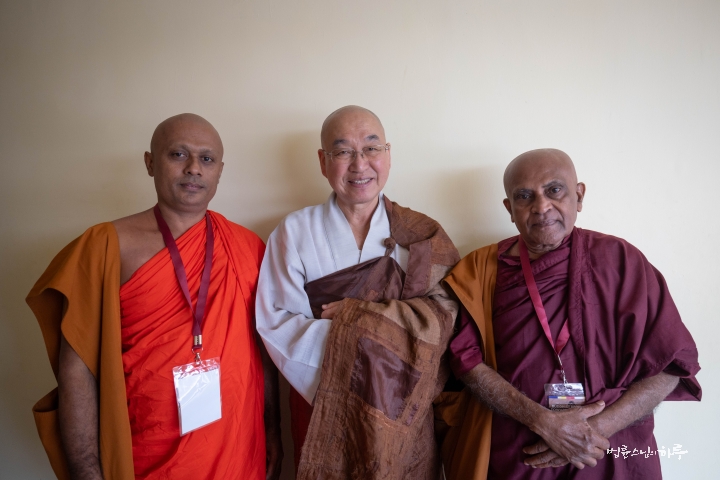
From 10:40 AM, Sunim moved to attend the ‘Ecological Temple Conference’. As he sat down to listen to the lecture, an activist from Myanmar came to greet him.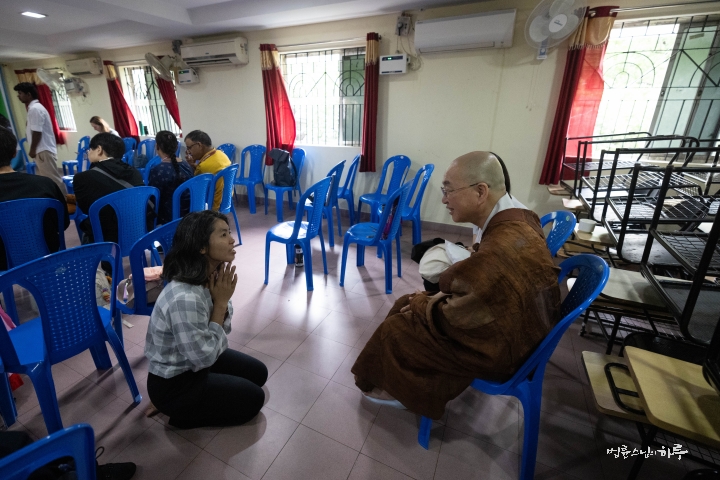
“Thank you for providing a lot of medical supplies to Myanmar during the COVID-19 pandemic.”
“Yes, it’s nice to meet you.”
The lecture soon began. This session emphasized that education and renewable energy are important for creating an ‘Ecological Temple’, with two experts presenting on these topics.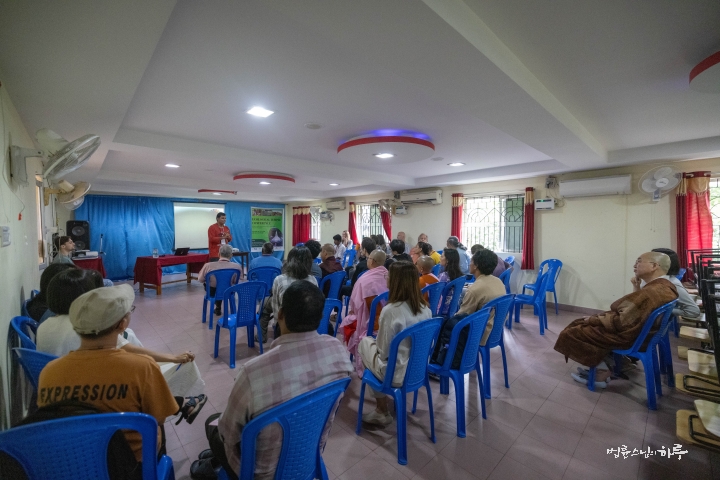
First, Rajesh from the Jaipur Ambedkar School spoke on the topic of ‘Holistic Education in Ecological Temples’. Rajesh emphasized that education should go beyond being a mere academic tool to promote holistic human growth and make practical contributions to society.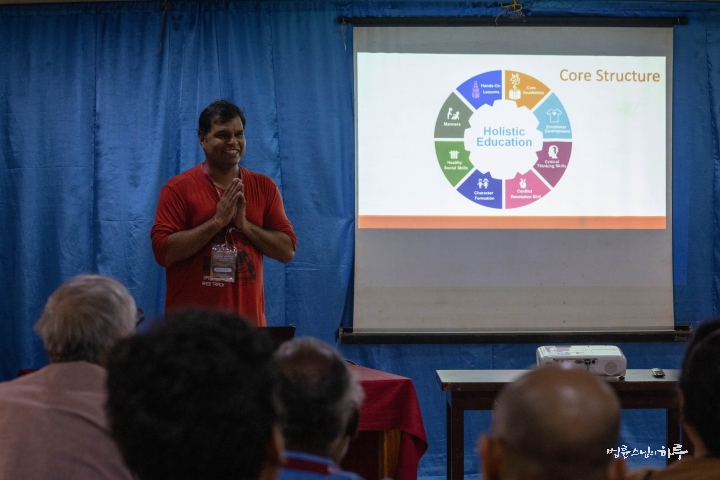
“We need to understand the needs of the local community and develop curricula that provide students with the knowledge and skills they actually need, in cooperation with the community. By providing students with direct experiential learning, we can enhance their problem-solving abilities and application skills in real life. Instead of encouraging competition, we should teach students cooperation and social responsibility. This is the core of sustainable education.”
Next, Jonathan Watts from INEB Japan spoke on the topic of ‘Renewable Energy as an Alternative to Nuclear Energy’. Using the Fukushima nuclear accident as an example, Jonathan Watts reminded everyone of the dangers of nuclear energy and emphasized the need to build community-based energy self-sufficiency models using solar and wind power as sustainable energy alternatives.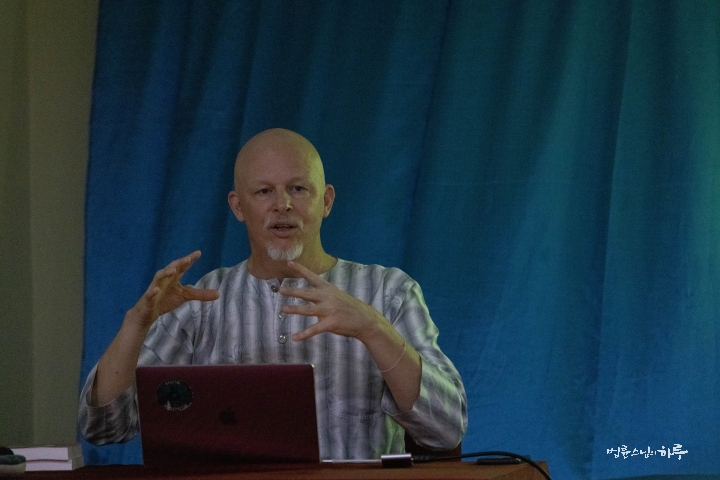
“Solar and wind energy also have limitations when implemented in a centralized manner. We need to shift the energy paradigm to a community-based approach to promote economic self-reliance and environmental protection for residents, and utilize small-scale traditional technologies.”
As Sunim was deeply engaged in listening to the lectures, it became lunchtime.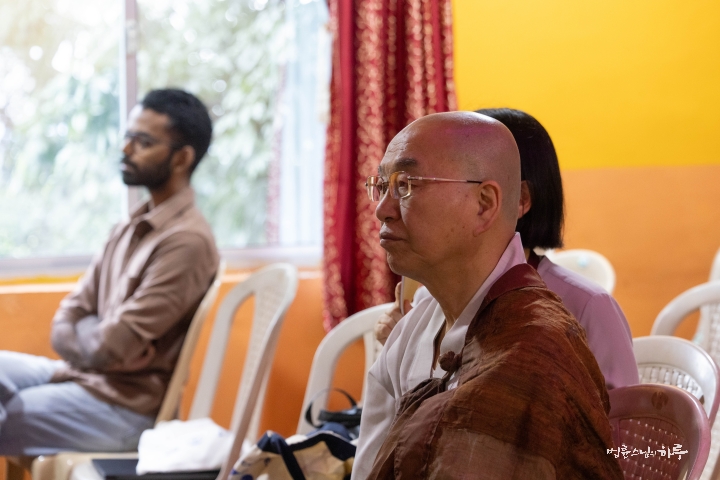
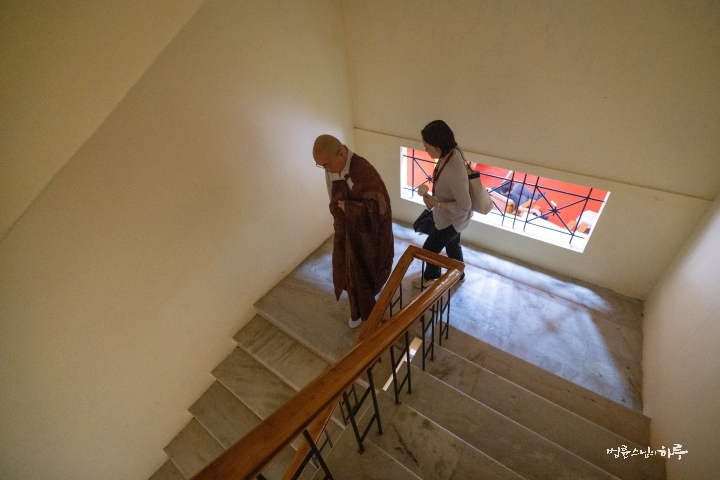
After moving to the cafeteria for lunch, from 12:30 PM, Sunim had a meeting with participants from Myanmar. Sunim personally gathered all the participants from Myanmar to discuss the current food shortage and famine issues in Myanmar.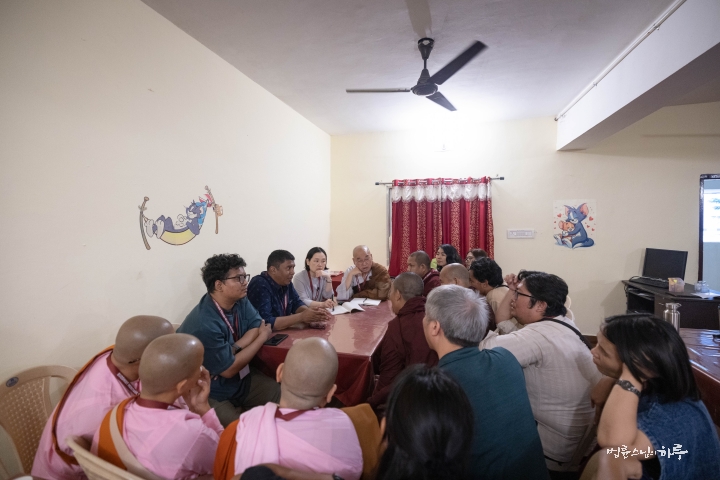
How Can We Solve Myanmar’s Food Shortage Problem?
The United Nations Development Programme (UNDP) has announced that Myanmar’s Rakhine State is on the brink of an unprecedented disaster, stating that if the current situation continues, it will reach a state of famine by the middle of next year. The UN classifies food crisis levels into five stages according to severity: ‘normal’, ‘alert’, ‘crisis’, ’emergency’, and ‘famine’, with famine being the worst food crisis situation.
Sunim inquired about the current situation in Myanmar. The participants from Myanmar informed him that the food shortage is very severe.
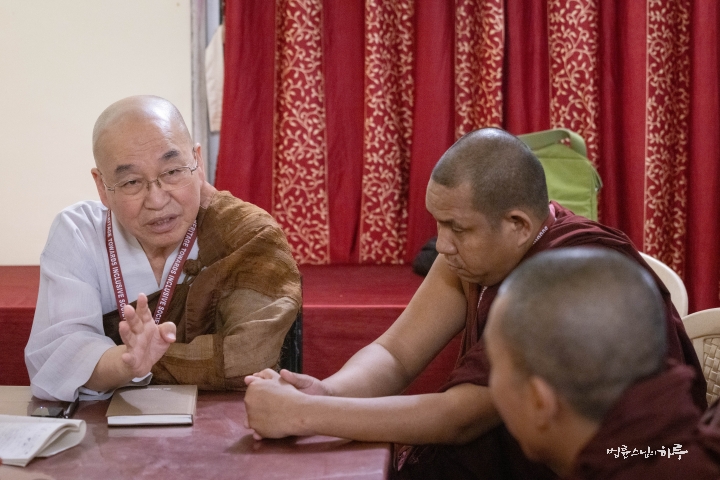
“How many casualties are occurring due to the civil war?”
“Many casualties are occurring daily. The situation is serious.”
“JTS wants to provide food aid right away, but it’s currently impossible to distribute food by gathering many people in one place because if we ask residents to come receive food, the government forces immediately bomb the gathering.”
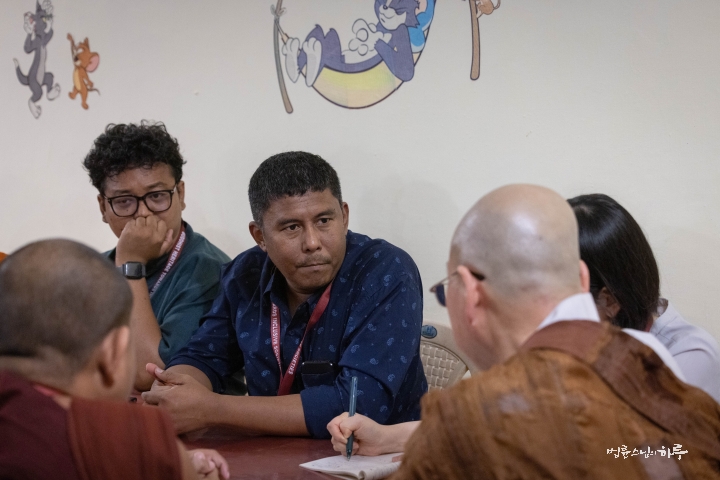
“Recently, 30 people, including children, were killed when a bomb was dropped on people gathered at a temple to receive food. So we have to visit each house to distribute food.”
“I saw news reports saying that the entire Rakhine State is experiencing severe food shortages. Is this true?”
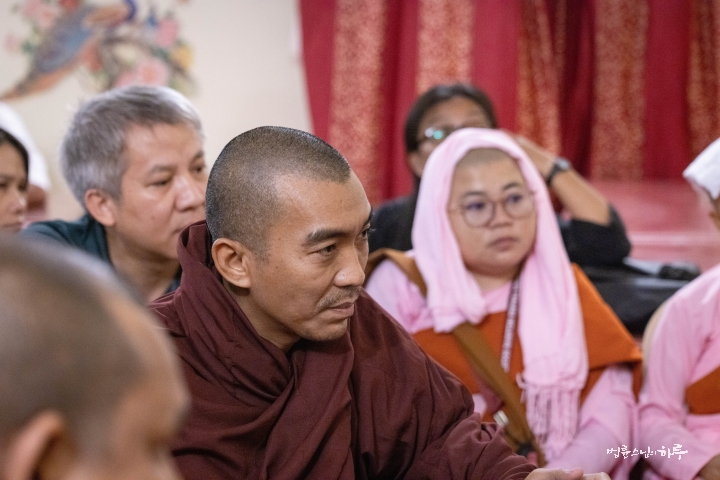
“Yes, that’s correct. The entire Rakhine State is facing food shortages, but two areas are particularly struggling. First, the regions far from the Bangladesh border are in difficulty because it’s hard for aid to reach them due to the distance. Second, people living in large cities are struggling. The military has complete control over these cities, so no support can be provided by land. They only receive food supplies for the military by air. Victims are emerging everywhere, but because it’s not reported in the media, the situation is extremely dire.”
Sunim suggested that despite the very difficult situation, we should do our best to find solutions.
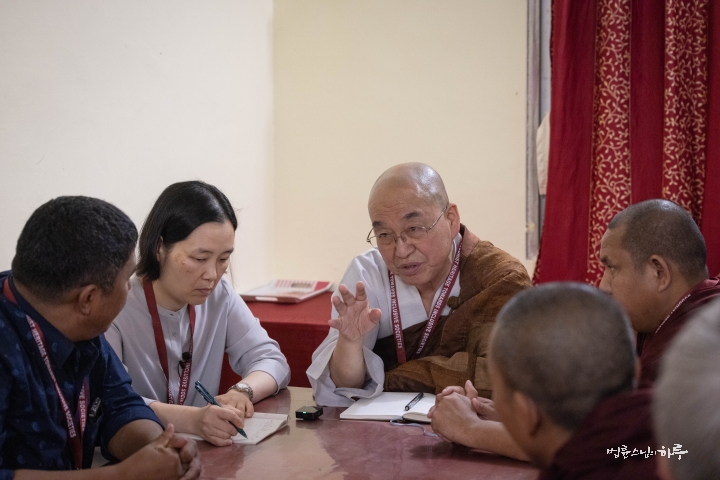
“When the lives of various indigenous people in Rakhine State stabilize, some Rohingya refugees will be able to return to their homeland. That’s why JTS is continuously looking into what support we can provide to stabilize Rakhine State. We are currently working with UNHCR to find ways to disperse refugees to various countries and help some return to Myanmar. To solve the Rohingya refugee problem, at least some refugees need to return to Myanmar so that other countries have a reason to accept refugees. If the Rohingya refugee issue is resolved, it will be easier to solve the Myanmar problem as well. That’s why I’m continuously working to resolve the Rohingya refugee issue. The day after tomorrow, I’m going to Cox’s Bazar in Bangladesh to participate in a ceremony to donate 6.36 million bars of soap to the Rohingya refugee camps. About 40% of the camp residents are children under 14, but they are not receiving any education. This is one of the most urgent issues. No matter how difficult it is, let’s endure well. If we put our heads together and research, we can solve problems little by little.”
After an hour of conversation, the meeting concluded.
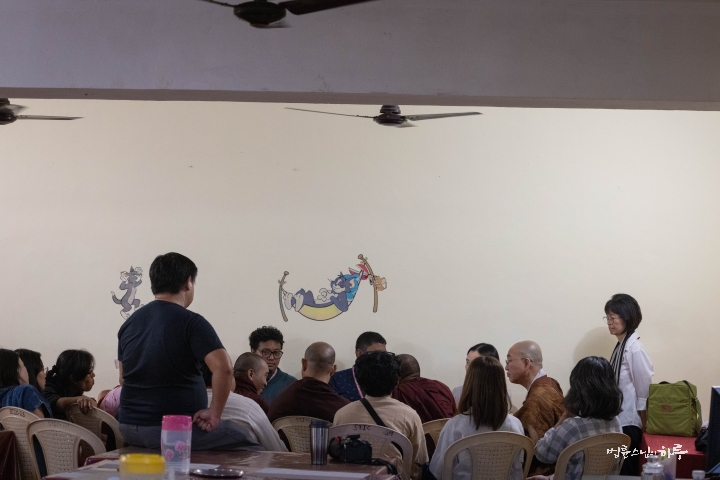
At 1:40 PM, Sunim moved to the first-floor hall to meet with Gotam, an INEB board member. Gotam is one of the people planning and organizing this INEB conference. He discussed the core purpose of this conference with Sunim. Gotam emphasized that the maritime trade routes extending from South India played a crucial role in spreading Buddhism to Southeast Asia, and stressed that teaching this Buddhist heritage to the Dalit (untouchable) class greatly helps in restoring their confidence.
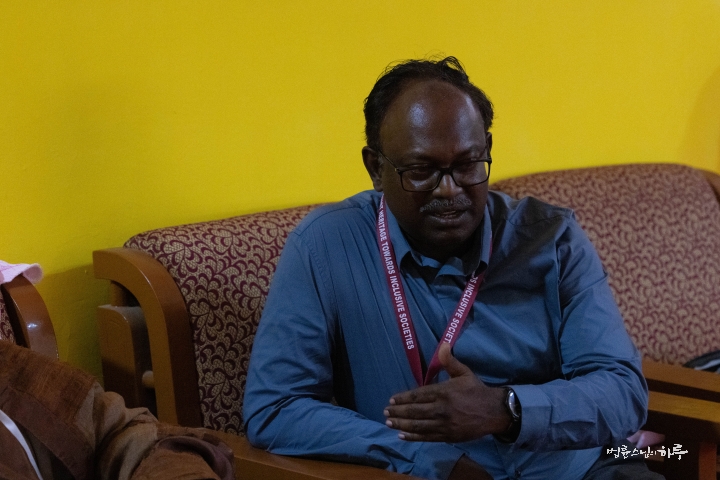
“The maritime trade routes starting from South India played an important role in the spread of Buddhism. These trade routes created historical connections with Korea, Japan, and Southeast Asia. That’s why we need to teach the Dalit (untouchable) class about South India’s Buddhist heritage and archaeological history. If the Dalit class doesn’t know this history of Buddhism, they become socially isolated. We need to help them regain their identity and confidence through Buddhist history. The caste system separated everyone, but through Buddhism, we can accept people from all over the world, including Japan and Korea, as brothers and sisters.”
Sunim deeply empathized with Gotam’s efforts to shed light on South India’s Buddhist heritage in a modern context and encouraged him.
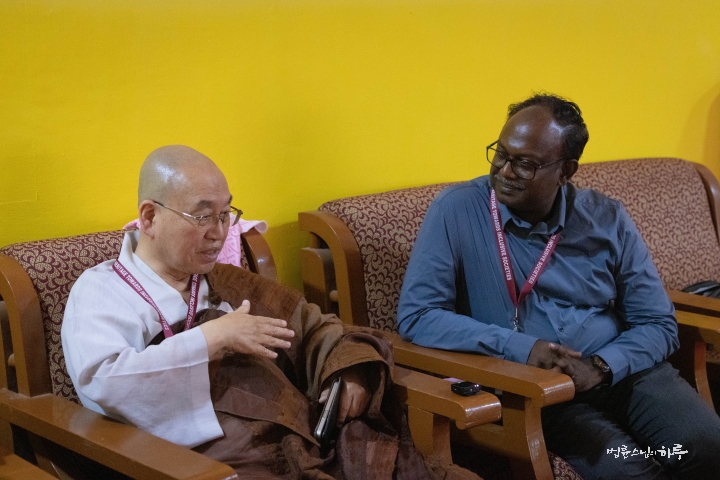
“In Korea, a monk at Tongdosa Temple has shown great interest in Gaya Buddhism, which was spread through maritime trade routes, and even made a documentary film about it. I will connect you so that you can exchange ideas. Even before Buddhism was introduced to Gaya, there was already very active maritime trade between the Ayodhya Kingdom and the Gaya Kingdom. It was through this route that the princess of the Ayodhya Kingdom and Master Jangyu were able to come to Gaya.”
“Thank you.”
Next, from 2:10 PM, Sunim met with Harsha, the chairman of INEB. Harsha apologized for arriving late at the venue, explaining that he had been helping with a major flood that occurred in Sri Lanka a few days ago. He shared that he felt much lighter after resigning from his position as the Sri Lankan Ambassador to Canada.
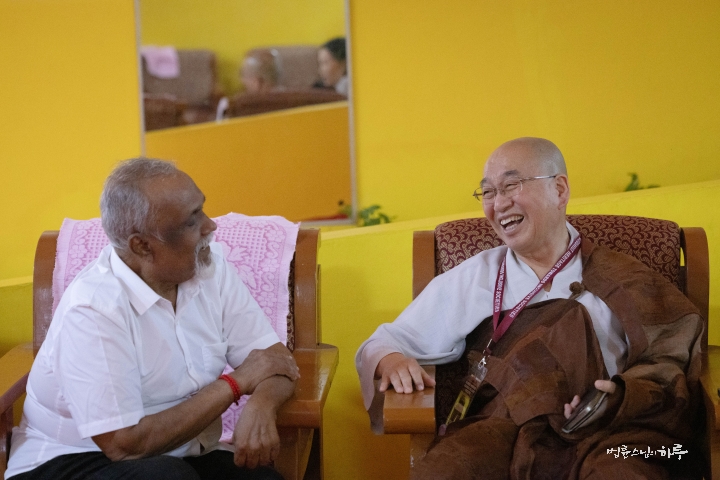
“How do you feel after quitting your ambassador position?”
“I feel much lighter. I’ve lost 20kg in weight.” (laughs)
Harsha spoke about the severity of the Rohingya refugee problem.
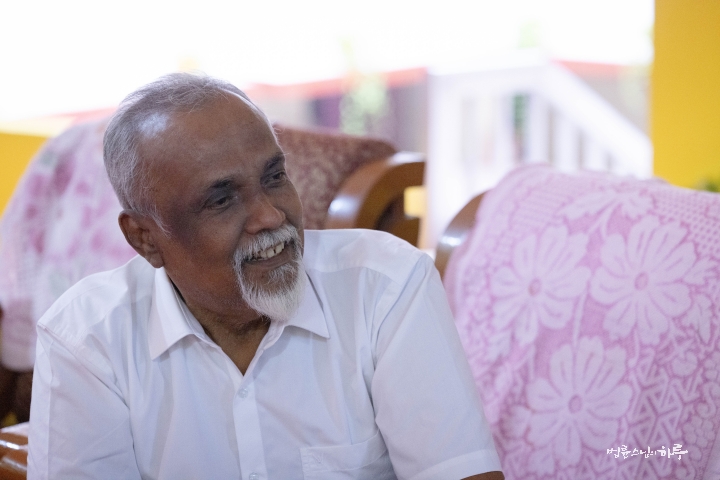
“Only Saudi Arabia is showing interest in the Rohingya refugee issue. Other countries are more focused on the Israel-Palestine problem.”
Sunim proposed a solution where neighboring countries would accept dispersed refugees.
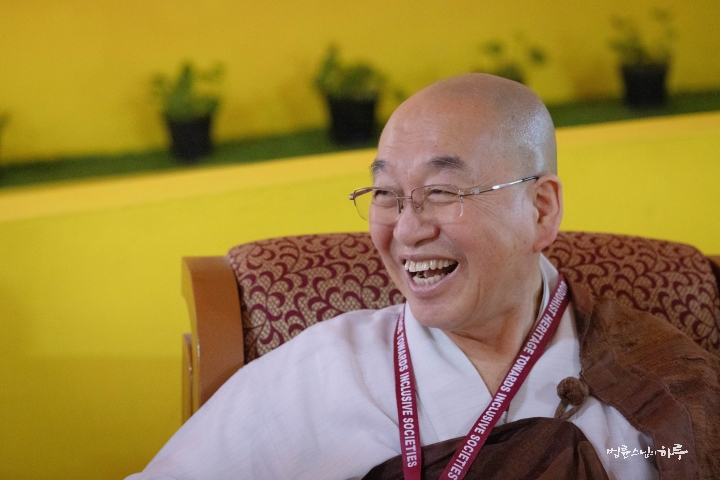
“Some should return to Myanmar, some should remain in Bangladesh, and the rest should be dispersed to other countries like Malaysia. The biggest problem is that children are not receiving education. It’s a serious situation when refugees can’t even receive elementary education.”
In addition to this, Sunim had conversations on various topics such as climate change issues and interfaith reconciliation before concluding the meeting.
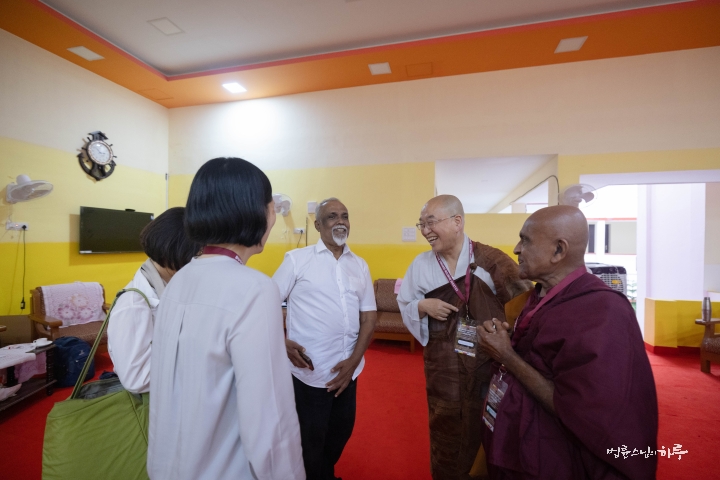
At 4 PM, there was a plan to do a live Friday Dharma Q&A broadcast for Korean viewers, but the internet at the venue wasn’t working well. After looking for an external location with internet connectivity but finding no suitable place, it was decided to play a recorded version instead of doing a live broadcast.
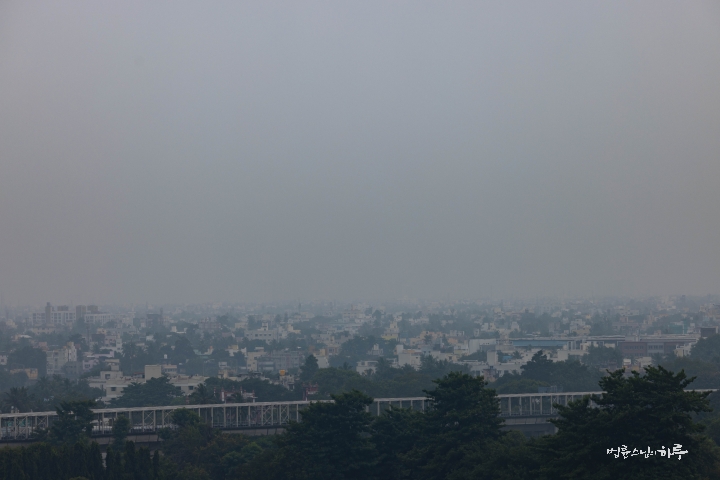
Instead, Sunim attended the afternoon program that he had initially planned to skip. All conference participants gathered to share the content discussed in each session.
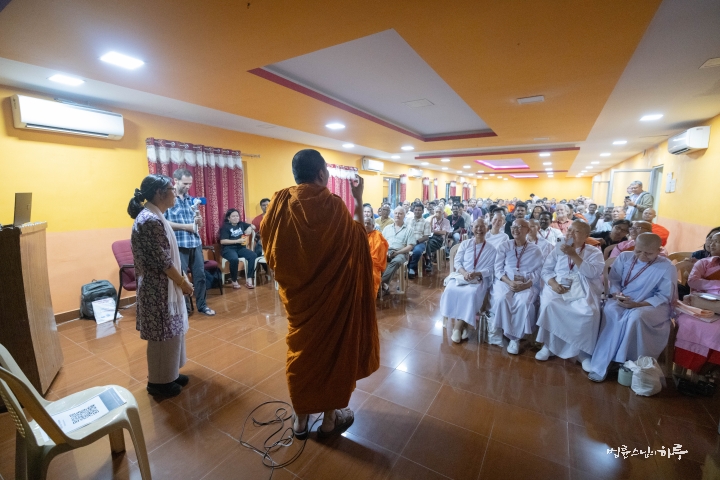
In Session 1, they had small group discussions about building an inclusive society for the marginalized. One person from each group came forward to share their discussion content. One group reported that they had extensive discussions about methods to overcome discrimination against the Dalit class, who are marginalized in Indian society.
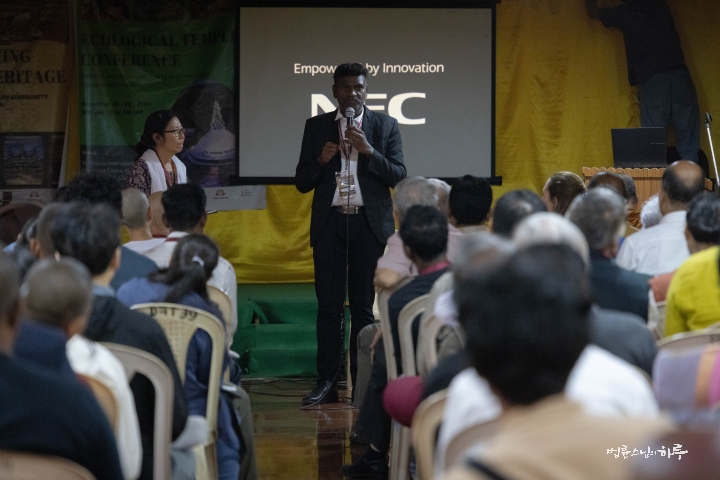
“Historically, the Dalit class has recovered their identity and self-reliance through Buddhism. We need to continue this tradition and strengthen their social position through education and job opportunities. Our group shared specific examples of how we are helping Dalit youth regain confidence and achieve economic independence through education centers and vocational training institutes.”
Session 2 discussed methods for creating ecological temples. They particularly shared cases of small-scale eco-temple projects that started in Myanmar and have now spread to Japan and Southeast Asia.
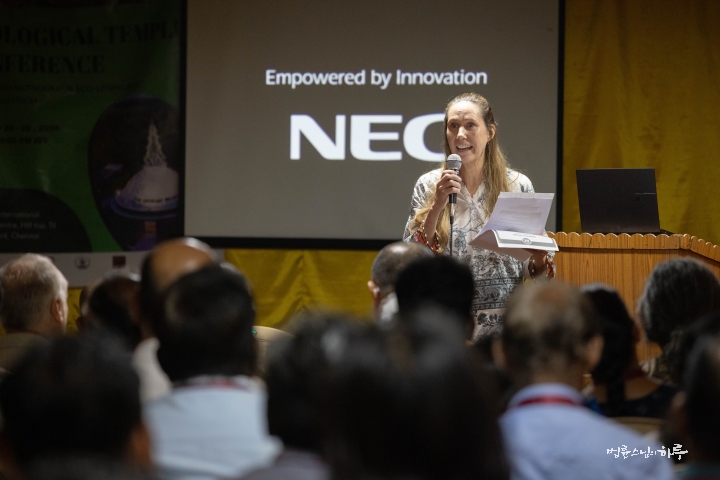
“The eco-temple project is not just an idea but a practicable action model. The project that started in Myanmar has contributed to temple construction and local residents’ livelihoods by using recyclable building materials. An eco-temple in Japan has introduced a solar power generation system to supply electricity to the local community. This has expanded into the Meta Garden project, which is restoring the local ecosystem. In particular, it’s helping local residents directly care for the environment using organic farming and recycled resources.”
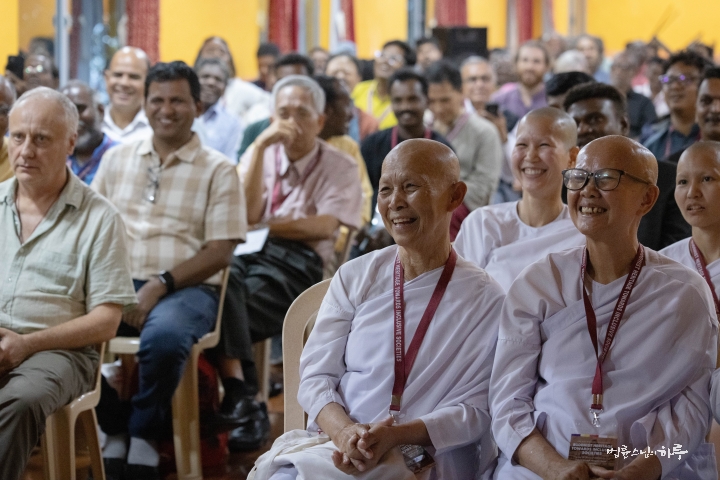
Session 3 discussed the preservation of Buddhist heritage. They emphasized that preserving Buddhist heritage is not simply about protecting the past, but about conveying value to the next generation, and shared specific examples.
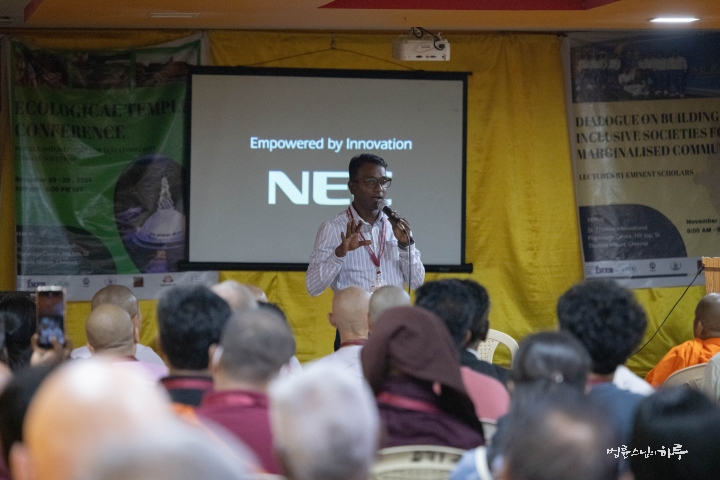
“The efforts of the local community were crucial in preserving the ancient Buddhist ruins discovered in the Amaravati region of South India. The restoration of Buddha statues in the Telangana region of South India is a prime example. This project is a case where local residents directly participate in protecting heritage while also pursuing economic self-reliance.”
Sunim listened intently to the content presented by the participants.
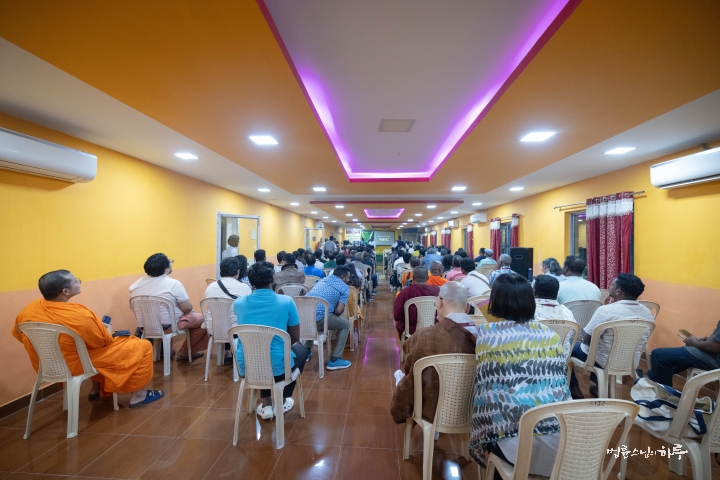
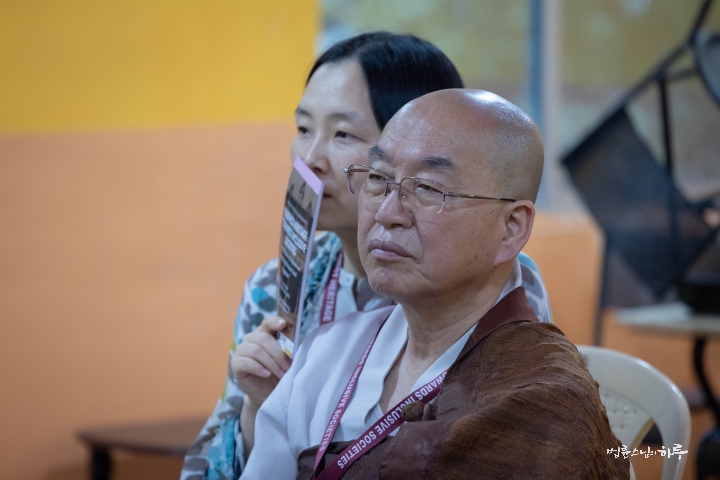
After all the programs ended, dinner was served at 6 PM.
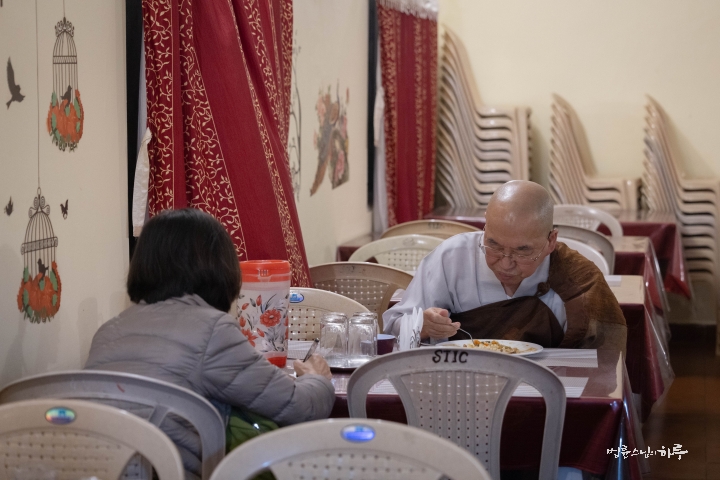
There were no group programs in the evening, so participants either interacted individually or rested. Sunim decided to rest early and went to bed, as he had been on an overnight flight the day before and was feeling under the weather.
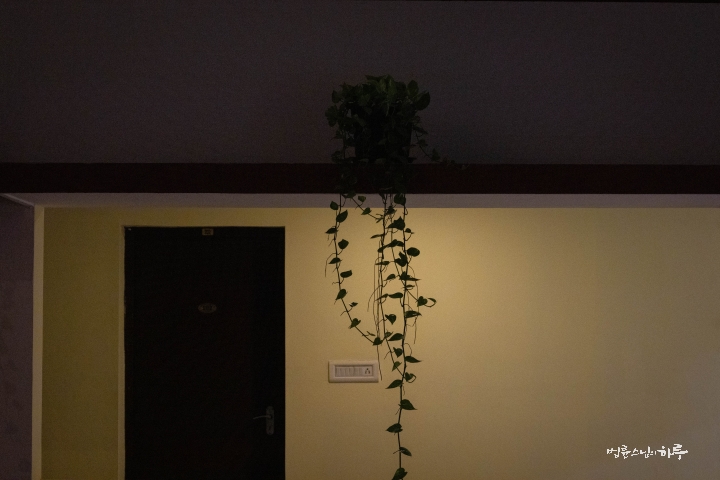
Since there was no Dharma talk today, I’ll introduce the content of a conversation between a questioner and Sunim from the Happy Dialogue Dharma Q&A lecture held in Pohang on the 25th.
I can’t control my anger when I meet people who are unreasonable and irrational
“You’d need to go to a doctor for a check-up to know that. For example, if you have indigestion, you’d go to an internal medicine for a check-up, and if your eyes are blurry, you’d go to an ophthalmologist for an examination. The same applies to mental issues – you need to get a check-up. If you’ve always been quick to anger, we could say it’s because of a bad temper. But if you’re saying you get angry more often than before, you need to go to a psychiatrist for a check-up. If the doctor diagnoses you with ‘menopausal disorder,’ they’ll give you appropriate medication. The medication usually prescribed when nerves are on edge is a tranquilizer. That’s why people often don’t want to take psychiatric medication because it makes them drowsy and feel dazed. Currently, there are no specific treatments for mental illnesses. This is because mental processes are not yet fully understood. However, many mental processes are based on physical processes. There might be problems caused by too much or too little secretion of hormones or certain substances. During menopause, hormone secretion might become too low or too high. But there’s no medication that’s exactly right for you yet. So with psychiatric medication, you need to try different ones for about three months, changing every week or two weeks. This is the easiest method of treatment. You just need to take the medication.”
“I didn’t ask because I want to take medication. Isn’t there a natural way to treat this?”
“Medication also comes from natural substances. Taking medication is the easiest way. When you say you want to be treated naturally, do you mean you want to be cured without any effort?”
“No, I mean like doing a temple stay or something like that.”
“During a temple stay, there’s no one nagging you, so symptoms don’t appear. How would that help? Don’t you get angry when you’re talking to someone who’s being unreasonable? What would make you angry when you’re sitting quietly during a temple stay?”
“I thought finding peace of mind might help improve things.”
“When you return to your daily life after the temple stay, you’ll meet unreasonable people again. Then the same thing will repeat. Of course, if symptoms are severe, a temple stay might help a little. If you get angry even when you’re alone at home, not directly clashing with people, then a temple stay could be helpful. If meeting people every day causes so much stress that it’s unbearable, staying at a temple over the weekend could be helpful. But this method is like sitting down to rest for a moment when your legs are too sore – it can’t be called a fundamental treatment.”
“So your conclusion is that I should go to the hospital?”
“First, if possible, it’s best not to meet people who stress you out. I don’t mean there’s a problem with that person, but since you get worked up when you see such people, it’s better to avoid them. Second, if you go to a psychiatrist for an examination and feel better after taking medication, there’s no need to struggle with practice, right? If medication doesn’t solve the problem, then you move to the next step. That’s why I’m telling you to go to the hospital – it’s not because I have some connection with hospitals. Third, there’s a method of self-treatment. Physically, walking a lot helps. Walking about 10,000 steps a day, or equivalently, doing 300 bows a day. These two are similar in terms of exercise amount. 10,000 steps is about 7km, which takes about an hour and a half to two hours to walk. 300 bows take about an hour, but it’s a bit more strenuous than walking. It’s currently known that having healthy lower body greatly helps mental health. That’s why in the old days, people often said that if you develop neurasthenia, living in the mountains for a few months carrying firewood on an A-frame would help.
Logically speaking, getting angry means that the thought ‘I am right’ has become stronger. When you’re young, even if you have strong thoughts of ‘I am right,’ as you get older, you start to think ‘it’s all the same’ and don’t get angry as much. When you’re young, you live thinking ‘this is right,’ but when you look back after about 30 years, you realize there’s not much difference between this and that. Looking back, you realize that even people you like have caused you harm, and people you dislike haven’t really caused you much harm. When a lot of time has passed and you look back, judging right and wrong, good and bad, loses its meaning. That’s why people become more generous as they get older. When you’re young, whether male or female, you judge how pretty someone’s face is, but when you’re in your 70s and look at your husband or wife’s face, how is it? That face is just that face. (Laughter)
But you’re going in the opposite direction now. The fact that you’re judging right and wrong more as you get older means that you’re still holding onto the thought ‘I am right.’ Your standards for viewing the world are gradually strengthening. If this continues as you get older, you’ll suffer more. Right now, you can’t stand just a few unreasonable people, but gradually you’ll start nagging your wife too. Then after about 10 years, your wife might move out and, she’ll leave you behind. (Laughs)
“People’s thoughts, ideologies, and beliefs are just different. There’s no need to judge who is right or wrong too much. We must realize this. The thought that ‘I am right, and you are wrong’ is what demonizes others. Wars break out because people think it’s okay to kill demons. Of course, you haven’t resorted to violence yet. However, if you find yourself thinking, ‘I wish I could smack those people on the back of their heads’ when you see others’ behavior, you’re judging right and wrong too much. Accepting that we’re different means acknowledging others’ actions even if you don’t agree with them. With this attitude, you’ll feel less angry. Even if you hear this Dharma talk today and think, ‘Ah, I see,’ your long-standing habit, or karma, will make you angry again when you see such behavior. At those times, don’t blame others, but look at yourself. You should constantly be aware, thinking, ‘I’m being judgmental again.’ It definitely helps to bow many times, saying, ‘I am lacking.’ However, bowing makes your legs hurt a lot, doesn’t it? Isn’t it easier to just take medicine prescribed by a hospital? That’s why it’s best to combine these two methods.
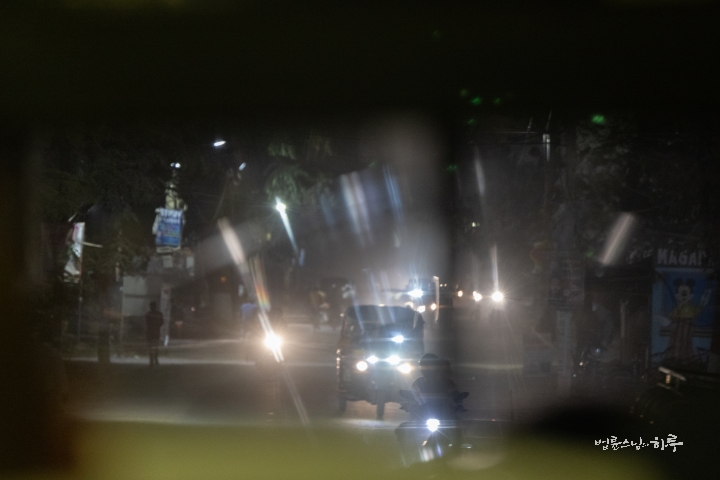
If you find it unbearable to be around people who make you angry, it’s best to avoid them. However, if it’s someone you can’t avoid, like a coworker or family member, it might be helpful to get a medical checkup and take tranquilizers. But since tranquilizers become less effective over time, it’s important to maintain mental health through activities like walking a lot or doing prostrations. Going a step further, the fundamental healing method is to practice recognizing that ‘we’re just different.’ Repeatedly practicing the attitude of acknowledging and understanding the differences between yourself and others can be very helpful.”
“Yes, thank you.”
Currently, a cyclone storm has made landfall in Chennai, bringing heavy rainfall. A visit to historical sites is scheduled for tomorrow, but if it’s canceled, Sunim plans to visit the Chennai Government Museum, one of India’s four major museums, along with the conference participants.


